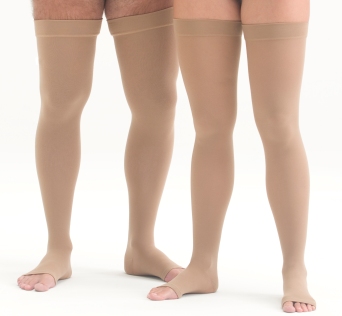Unsightly reticular veins and spider veins common cosmetic concern in the dermatology clinic. “Dilated blue veins and broken blood vessels can develop on the skin over time, especially on the lower extremities,” explains Dr. Adam Mamelak, board-certified dermatologist in Austin, Texas. While the causes of these blood vessels are often multi-factorial, a number of good and effective treatments exist to help eliminate these blood vessels.
Sclerotherapy
 Sclerotherapy involves the injection of a specialized sclerosing solution into the individual blood vessels. Solution such as saline, dextrose, glycerin and Asclera have all been used for this purpose. The solutions irritate the blood vessel walls, inducing an inflammatory response and causing the cellular wall to break down, ultimately depleting the skin of these colored areas. While the treatment involves a good degree of precision and skill on the part of the treating dermatologist, the treatment outcome can be optimized by following specific post-treatment care instructions.
Sclerotherapy involves the injection of a specialized sclerosing solution into the individual blood vessels. Solution such as saline, dextrose, glycerin and Asclera have all been used for this purpose. The solutions irritate the blood vessel walls, inducing an inflammatory response and causing the cellular wall to break down, ultimately depleting the skin of these colored areas. While the treatment involves a good degree of precision and skill on the part of the treating dermatologist, the treatment outcome can be optimized by following specific post-treatment care instructions.
Compression Hose
“One of the most important things my patients at Sanova Dermatology can do after their sclerotherapy treatment is to wear compression hose,” says Dr. Mamelak. In a 1999 medical study, investigators found that compression enhanced the results of sclerotherapy treatment. The degree of improvement was directly related to the amount of time compression stockings were worn after a patients treatment. In their study, patients wore compression hose for either 3 days, 1 week or 3 weeks after sclerotherapy for spider veins on the legs. While the best results were observed amongst those patients that wore compression hose for a full 3 weeks, even those individuals that wore their hose for 3 days got better results than those that had no compression at all.
There are a number of reasons why compression is thought to lead to better results and is considered such an important recommendation. Compression does not to allow blood flow back into the treated vessels, thereby decreasing the veins’ chances of restoring their patency. The compression also facilitates resorption of the vessels by the body. Furthermore, in the 1999 study, patients that wore compression stockings also had few side effects after their treatments.
Dr. Mamelak typically recommends compression hose with a minimum of 18-20 mmHg of pressure and notes that he advises patients to start wearing them immediately after their treatment.
Contact Us
If you have questions about sclerotherpy or other treatments to eliminate your spider veins, contact Sanova Dermatology today.

